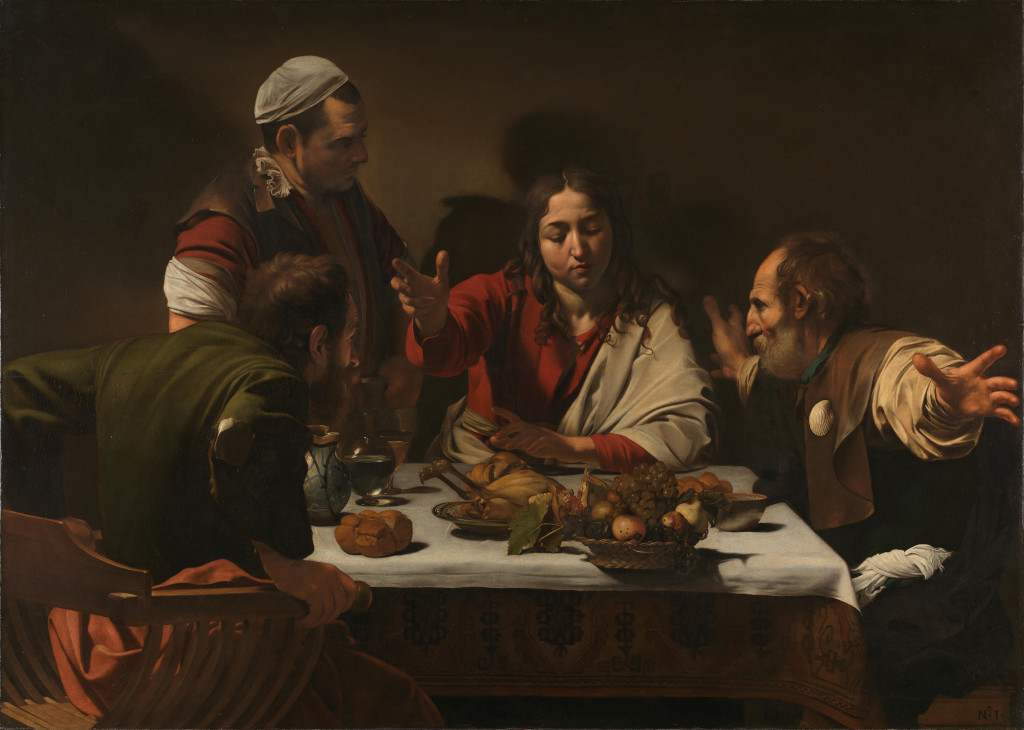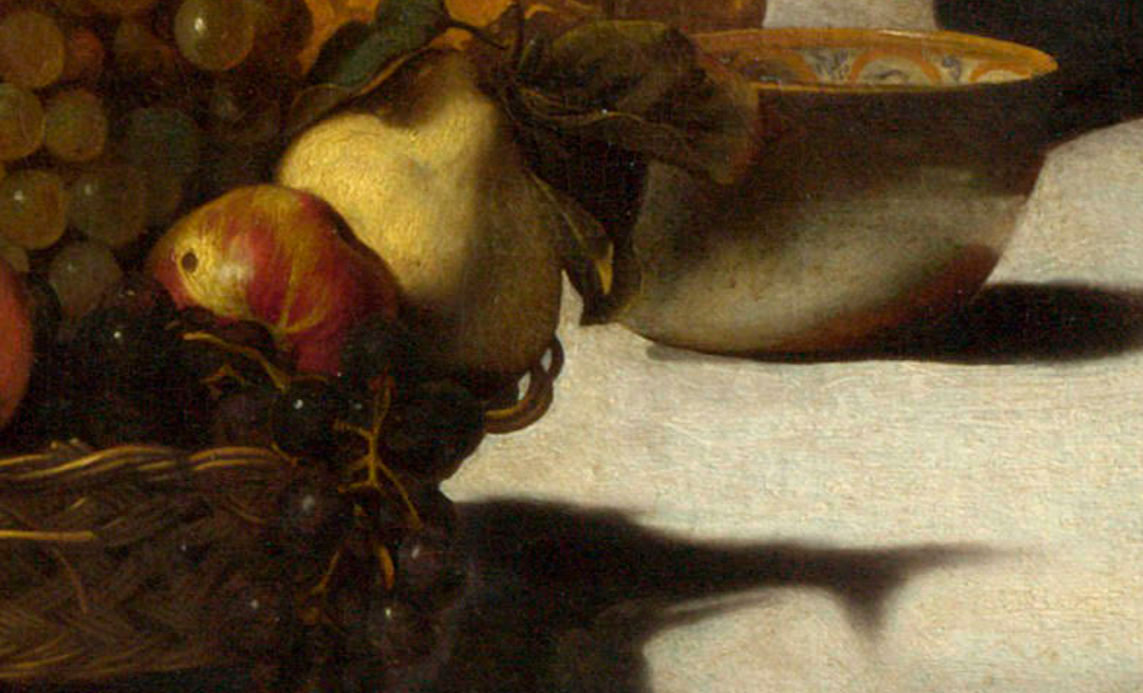Caravaggio was a master of light and dark. In this painting, Jesus blesses the bread at a simple inn table, and the shapes of the shadows – including an unexpected fish – lend a subtle mystery to the scene.

Supper at Emmaus shows a dramatic moment described in the gospel of Luke.
Just after Jesus’s followers discovered that his tomb was empty, two of his disciples were walking along the road to the village of Emmaus. Jesus joined them, but they didn’t recognize him.
As they neared the village, Jesus “walked ahead as if he were going on. But they urged him strongly, saying, ‘Stay with us, because it is almost evening and the day is now nearly over.’ So he went in to stay with them. When he was at the table with them, he took bread, blessed and broke it, and gave it to them. Then their eyes were opened, and they recognized him; and he vanished from their sight.” (Luke 24: 28-31)

Supper at Emmaus (1601) by Caravaggio
Luke identifies one of the disciples as Cleopas, but doesn’t name the remaining man. In Caravaggio’s interpretation, the other disciple was James the Greater; the artist placed a scallop shell — James’s signature attribute — on the elder man’s cloak. The artist’s vision was controversial for several reasons, including his decision to portray Jesus without a beard.
The basket of fruit, balancing precariously past the table’s edge, casts a shadow that has no relation to the pear leaves directly above it: the silhouette’s graceful curves form the shape of a fish, an ancient symbol of Christianity.
Caravaggio also uses the shadow of the innkeeper’s head to create a subtle halo behind Jesus.

Supper at Emmaus
Artist: Caravaggio (1571-1610)
Michelangelo Merisi da Caravaggio was a tempestuous Italian painter whose works are known for their dramatic lighting, masterful use of perspective, and intense realism. His controversial work influenced Baroque painters of his era as well as generations of later artists.
Year: 1601
Medium & Support: Oil on canvas
Dimensions: 141 cm. × 196.2 cm. (56 in. × 77.2 in.)
Location: The National Gallery, London
Online Information:
The Supper at Emmaus – The National Gallery, London website
A brief description, from the Episcopal Church, of the significance of fish imagery.
Other Information/Sources:
Schütze, Sebastian, Caravaggio – The Complete Works, Köln: Taschen, 2015.
 SECRET IMAGES
SECRET IMAGES
Leave a Reply